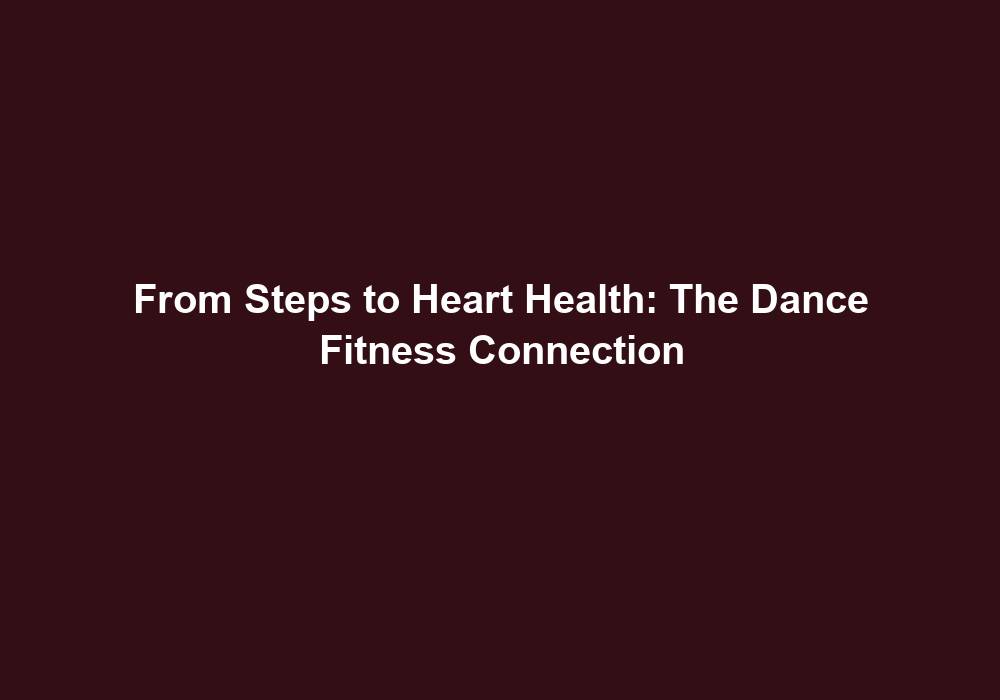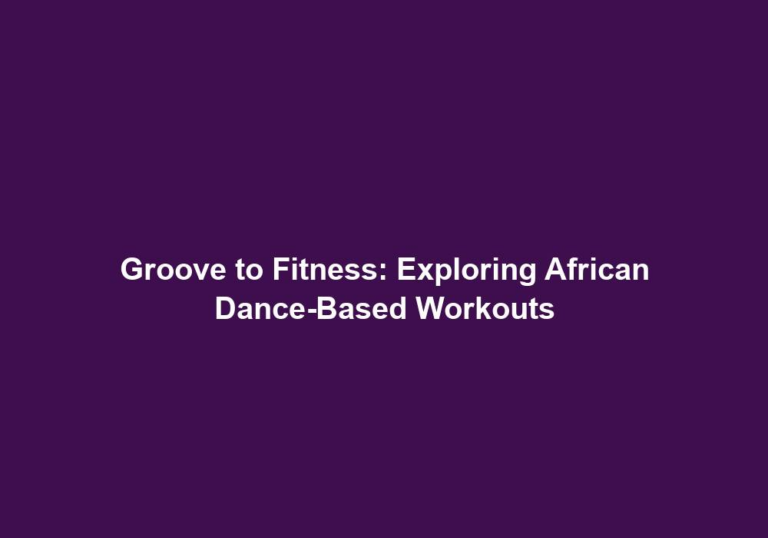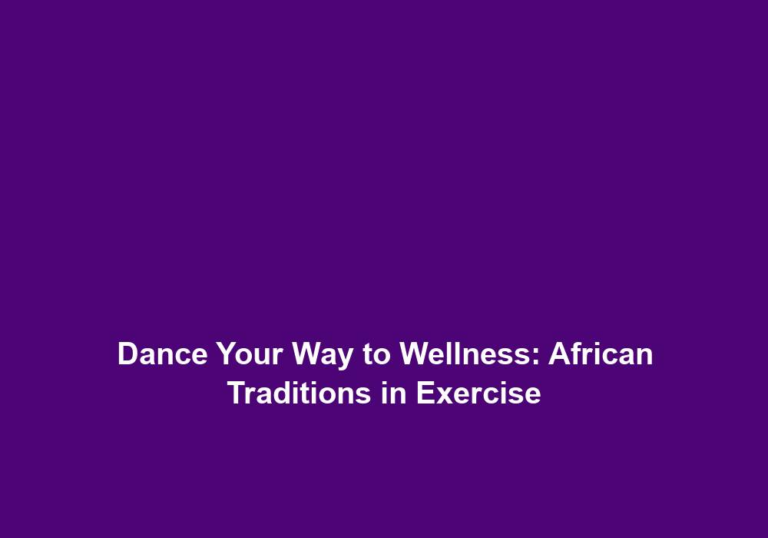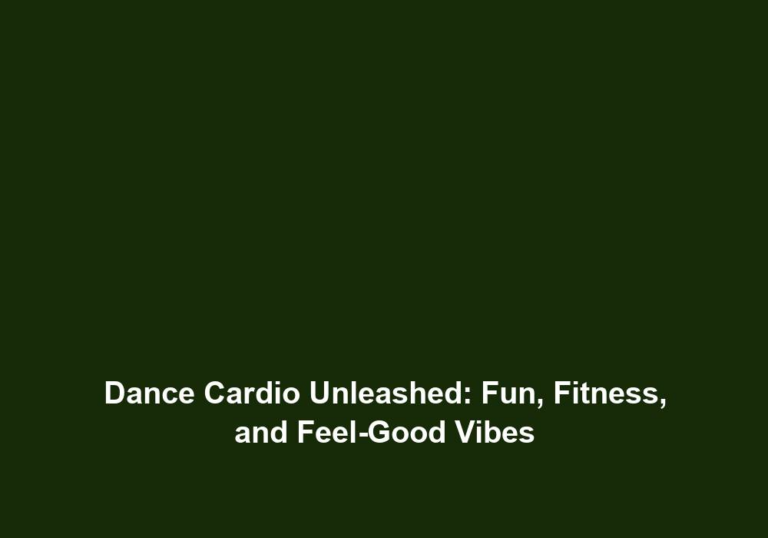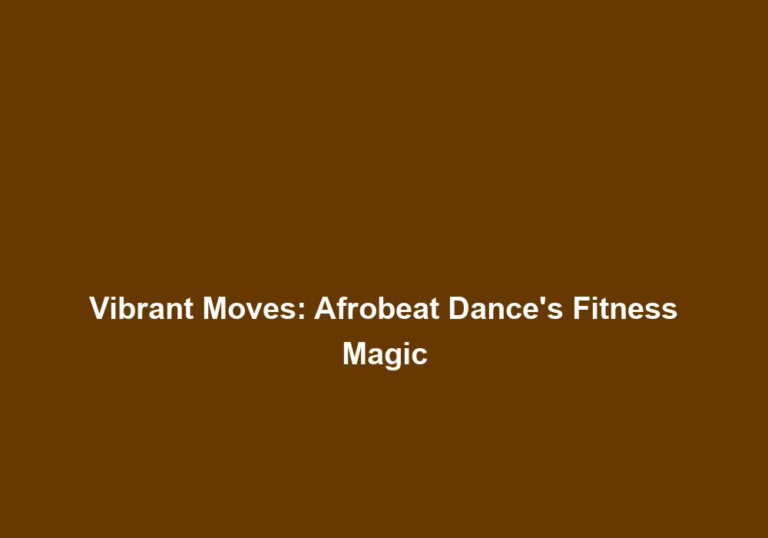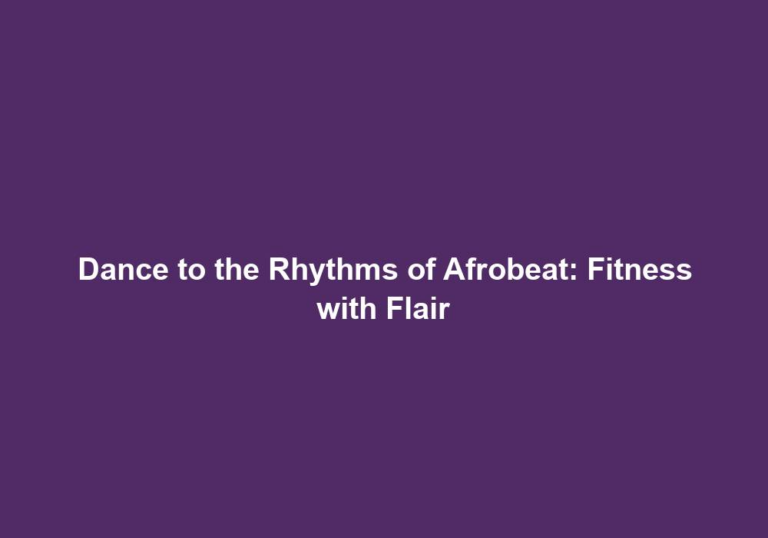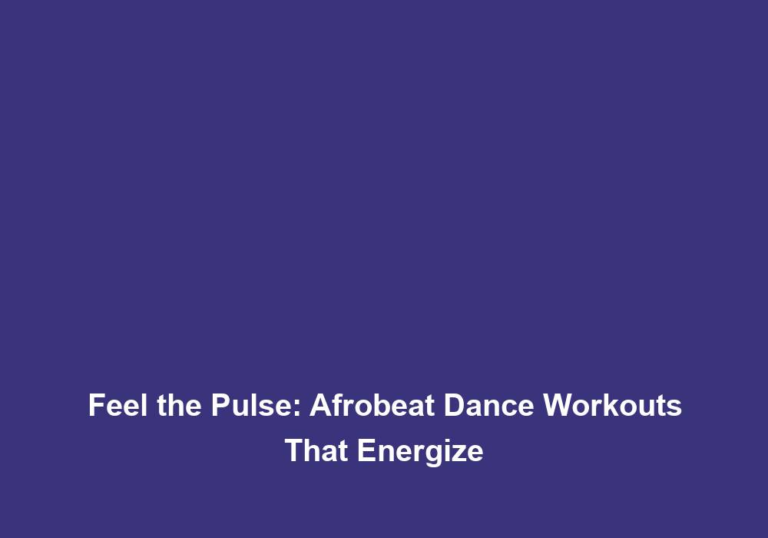From Steps to Heart Health: The Dance Fitness Connection
In today’s fast-paced world, it is crucial to find an enjoyable way to stay fit and prioritize our heart health. Dance fitness has gained significant popularity in recent years as an exciting and effective way to achieve cardiovascular fitness while having fun. With its combination of choreographed movements, upbeat music, and social interaction, dance fitness offers a unique and engaging workout experience for individuals of all ages and fitness levels.
Why Choose Dance Fitness for Heart Health?
-
Improved Cardiovascular Health: Engaging in dance fitness regularly can significantly improve cardiovascular health. By increasing heart rate and improving blood circulation, dance fitness reduces the risk of heart disease and other cardiovascular conditions. The continuous movement and challenging choreography in dance fitness help strengthen the heart muscles and promote overall cardiovascular fitness.
-
Enhanced Endurance: Dance fitness is an excellent aerobic exercise that helps increase endurance levels. The constant movement and intensity of dance fitness routines challenge the body’s cardiovascular system, leading to improved stamina and overall physical performance. Regular participation in dance fitness can enhance endurance, allowing individuals to engage in other physical activities for longer durations without feeling fatigued.
-
Weight Management: Dance fitness is a high-energy activity that burns a significant number of calories. Regular participation in dance fitness can assist in weight management and contribute to achieving a healthy body weight. By combining cardiovascular exercise with enjoyable dance routines, individuals can burn calories and improve their metabolism, helping them maintain a healthy weight or reach their weight loss goals.
-
Reduced Stress and Improved Mental Well-being: Dancing is known to release endorphins, also known as feel-good hormones, which can alleviate stress and boost mood. Regular participation in dance fitness can help reduce anxiety, depression, and overall improve mental well-being. The combination of music, movement, and social interaction in dance fitness classes creates a positive environment that promotes relaxation and stress relief.
-
Enhanced Coordination and Balance: Dance fitness involves a variety of movements that challenge coordination and balance. Regular participation can improve these skills, leading to better overall body control and reducing the risk of falls and injuries. The rhythmic patterns, footwork, and body movements in dance fitness routines enhance proprioception and spatial awareness, contributing to better coordination and balance.
-
Muscle Tone and Strength: Dance fitness incorporates a wide range of movements that engage various muscle groups. By consistently participating in dance fitness, individuals can tone and strengthen their muscles, resulting in a more sculpted and defined physique. The dynamic movements in dance fitness routines target muscles in the legs, core, arms, and back, promoting overall muscle strength and endurance.
Dance Fitness Styles for Heart Health
-
Zumba: Zumba is a popular dance fitness style that combines Latin and international music with easy-to-follow dance moves. This dynamic and energetic workout can burn a significant number of calories while providing a fun and exhilarating experience. Zumba incorporates various dance styles, including salsa, merengue, and reggaeton, which engage multiple muscle groups and promote cardiovascular fitness.
-
Hip Hop Dance Fitness: Hip hop dance fitness classes combine hip hop dance moves with cardiovascular exercises. With its urban and energetic vibe, this style of dance fitness offers a high-intensity workout that targets the heart and muscles. The fast-paced and rhythmic movements in hip hop dance fitness routines challenge coordination, endurance, and overall cardiovascular fitness.
-
Bollywood Dance Fitness: Bollywood dance fitness incorporates vibrant and energetic dance routines inspired by Indian cinema. This style of dance fitness provides an excellent cardiovascular workout while infusing cultural elements and music into the experience. The expressive and rhythmic movements in Bollywood dance fitness routines engage the entire body, promoting cardiovascular health and overall well-being.
-
Latin Dance Fitness: Latin dance fitness classes, such as salsa or merengue, offer a lively and rhythmic workout that targets the entire body. These dances engage various muscle groups and provide a cardiovascular challenge that promotes heart health. The combination of intricate footwork, hip movements, and partner work in Latin dance fitness routines improves coordination, balance, and cardiovascular endurance.
Getting Started with Dance Fitness
If you’re ready to embark on your dance fitness journey, consider the following steps:
-
Choose a Dance Fitness Style: Explore different dance fitness styles and choose the one that resonates with your interests and goals. Experiment with various styles to find the one that brings you the most joy and motivation. Whether you prefer the Latin rhythms of salsa or the energetic moves of hip hop, find a style that excites you.
-
Find a Dance Fitness Class: Look for local dance studios, fitness centers, or community centers that offer dance fitness classes. Attend trial sessions to find an instructor and class environment that suits your needs and preferences. It’s important to feel comfortable and supported during your dance fitness journey.
-
Invest in Proper Attire: Wear comfortable workout attire and supportive footwear that allows you to move freely and protects your feet and joints. Choose breathable fabrics that wick away sweat and avoid restrictive clothing that may inhibit your movements. Investing in proper attire ensures comfort and reduces the risk of injuries.
-
Warm-up and Stretch: Before starting any dance fitness session, warm up your body with light cardio exercises, such as jogging or jumping jacks. Follow it up with dynamic stretches to prepare your muscles for the dance movements ahead. Warming up and stretching help prevent muscle strains and increase flexibility.
-
Start Slow and Progress Gradually: If you’re new to dance fitness, start with beginner-level classes or instructional videos. Focus on mastering the basic moves and gradually increase the intensity and complexity of the routines as you become more comfortable and confident. Starting slow allows your body to adapt and reduces the risk of overexertion or injury.
-
Stay Hydrated and Listen to Your Body: Dance fitness can be a high-energy and physically demanding activity. Remember to stay hydrated by drinking water before, during, and after your workout. Listen to your body’s cues and take breaks when needed to avoid overexertion or injury. It’s important to maintain proper hydration levels to support your overall performance and well-being.
-
Make it a Habit: Consistency is key when it comes to reaping the benefits of dance fitness for heart health. Aim for regular participation in dance fitness sessions, whether it’s a few times a week or daily. Set goals and track your progress to stay motivated and committed. Making dance fitness a habit ensures long-term benefits and helps you achieve your health and fitness goals.
Remember, dance fitness is not just about the physical workout; it’s also about enjoying the experience and connecting with others who share your passion. So, lace up your dancing shoes, let the music guide you, and embark on a journey towards better heart health through the joyful art of dance fitness!
Note: This article is written in Markdown format.

